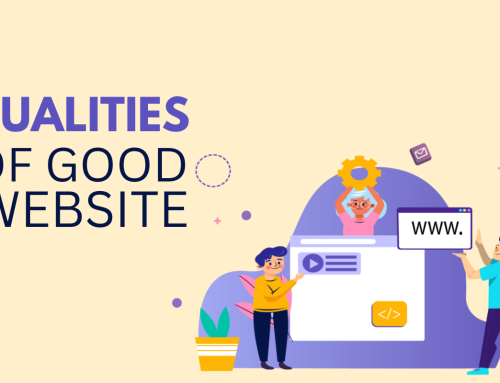If you get your website found online, there are two very significant sides to search engine optimization (SEO) that you want to ensure are working collectively to complement one another: on-page SEO and off-page SEO.
In this article, Digital Brains Tech will give you some essential SEO techniques on-page form and get the answers to your questions:
- What is on-page optimization in SEO?
- Why is on-page SEO important?
- How to do on-page optimization in SEO?
Digital Brains Tech also providing a quick on-page SEO checklist to allow you to go through your content to assure your on-page content quickly is performing at its best.
What is on-page optimization in SEO?
On-page SEO optimizes particular web pages to rank greater and earn more relevant traffic in search engines. On-page relates to both the content and HTML source code of a carrier that can be optimized instead of off-page SEO, which leads to links and other external signals.
For those freshers to on-page SEO, we highly suggest reading our On-Page Ranking Factors. On-page SEO has changed over the years, so it’s essential to keep up with the latest systems. Below is the latest post about on-page SEO from the digital brain techs, and we have chosen our popular resources to assist you along your journey.
Why is on-page SEO important?
On-page SEO improves search engines’ interpret your website and the content connected to it so that it can recognize if a searcher’s query is relevant to your site. Google is continually updating their algorithm to entirely understand a searcher’s purpose and deliver search results that meet that user’s requirements. As Google’s algorithm grows, so should your website.
It is vital that your website and its content, including what is visible to users, i.e., images, media, content, and what is visible to search engines, i.e., metadata, HTML, are optimized the newest practices used by companies like Google and Bing. This system of search engines can recognize your site and how to rank it. It’s not all on-page SEO that does this, but developing your on-page SEO best practices will strengthen your off-page efforts, so it’s worth doing.
How to do on-page optimization in SEO?
With on-page SEO, you have multiple different ranking factors. You want to implement all these factors. Using the time to optimize each of these factors will increase your rankings in search results and make your website more contentious and challenging to beat. Building optimized content from that start and using these on-page SEO tips will indicate you’re always be beginning off on the right foot.
The on-page checklist:
1. Keywords: front load, density, long tail
Keywords represent words used in SEO to target valuable user queries. Each page on your site should include text content that presents the page’s topic. Also, pages that are typically not optimized. Applying keywords throughout the body text of your page supports Google read it and rank it appropriately. In most cases, smaller companies will focus on long-tail keywords or keywords with three to four words.
Long-tail keywords often have below monthly search volumes, but they also have lower competition. It’s typically easier to describe the search intent behind long-tail keywords since they are more striking. High-performing SEO campaigns contain both long and short-tail keywords, and the terms you choose to target will depend on your business and goals.
2. URL optimization:
Your URL is like an address, but for a page on the Internet. URLs for your website’s pages should add brief descriptions of the page’s topic. Including your URL keyword instead of a long series of jumbled numbers also presents your site easier to navigate and gives people a more genuine idea of your page topics.
Use exact, organized URLs to improve your site’s structure and help you rank higher in relevant search results.
3. Meta data:
Your meta description is your page’s report and appears in SERPs.A meta information doesn’t influence your on-page optimization directly. It’s a feature that assists users, however, learn more about your page.
For example:
Title: My excellent Blog Post │Your-Site
4. Tags:
Heading tags break up content with H2s, H3s, and H4s to increase its readability. Today this is usually done automatically by WordPress or all other mainstream website builders, but it’s essential to check.
Your content should look like this:
<h1>Post or Page Title</h1>
example-How to find the best dog daycare
When typing your heading tags, remember to target your core keyword in your H1 tag.
5. Internal Linking
Internal linking terms linking to and from pages on your website. Internal linking often becomes overlooked when it comes to on-page SEO. As your site develops, however, it’s essential to develop an internal linking process. Every internal linking plan is different, but you should make sure that each new page has at least two to three links to it for the best results.
6. External linking
External Links are hyperlinks that point to any domain other than the part the link exists on (source). If another website links to you, this is recognized as an external link to your site. Similarly, if you link out to a different website, this is also considered an external link.
7. Image optimization
Image optimization is necessary for both Google and your website’s approachability. Use the ALT section, optimize the size for better load time, usually a maximum of 1000 pixels, put your images in the proper places, and make sure they are appropriate. You also need to make sure there are more individual images than stock or free stock images and add an inscription if it’s relevant.
Conclusion:
If you are searching a SEO Services Company for your business to rank digitally, Digital brains tech assist companies in improving with on-page SEO and with so many years in the industry. We know all of the strategies and best methods to ensure your business shows at the top of the search results you need to improve your rankings.




